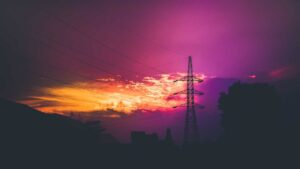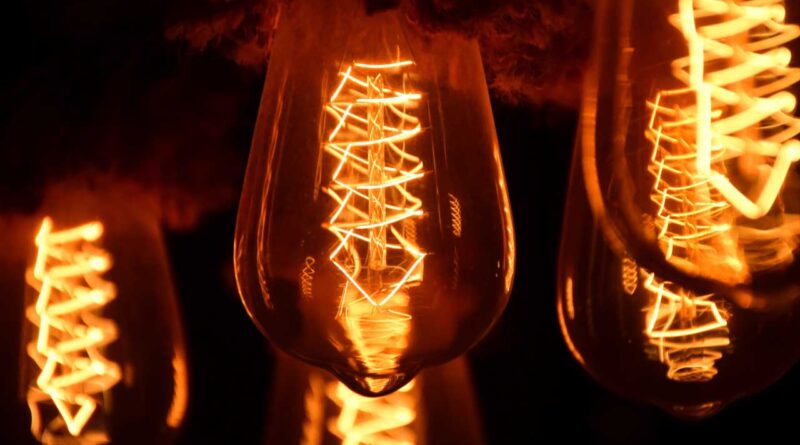Nuclear Power
Clean, Safe, Nuclear Power?
by Rob English
 The USA and the world will need a great deal more energy in the near future, so creative minds are researching ways to produce the energy at a reasonable cost and without exacerbating climate change.
The USA and the world will need a great deal more energy in the near future, so creative minds are researching ways to produce the energy at a reasonable cost and without exacerbating climate change.
At present, coal- and natural gas-fired power plants are providing much of the world’s electricity: those fossil fuels are burned to boil water whose steam turns a generator that makes electricity. Burning those fuels makes climate change worse. The same is true for wood burning.
Wind turbines and solar power arrays are popular in theory but they are too costly and unreliable at present. Also, they require between 400 and 750 times more land than nuclear and natural gas plants. And they really do kill lots of birds. Hydroelectric dams provide some electricity but we can’t construct many more because the world’s powerful rivers needed to activate their turbines are already saturated with them. Hydrogen is a fuel that burns cleanly – its exhaust product is pure water – but hydrogen deposits are rare on Earth so it would have to be fabricated by a costly, energy intense process of splitting it out of water or methane.
So if the above alternatives aren’t feasible or clean, where can we get power to make electricity or hydrogen? Well, I haven’t mentioned nuclear power yet.
When you split an atom, you get a lot of energy according to Einstein’s famous formula, E = M x C squared. It says that a large amount of energy is bound up in even a small, atomic amount of matter; a rough, unscientific analogy would be like splitting one small ice cube into smaller pieces and getting a whole gallon of water back. In nuclear power plants atoms are split in controlled reactions which produce energy to boil water whose steam drives a generator that makes electricity for you and me.
 The general public is suspicious of nuclear power plants because of two realities. For one, the word “nuclear” conjures up images of atomic bomb blasts; and secondly, people are generally aware of nuclear power plant emergencies at Three Mile Island, Chernobyl, and Fukushima. However, the latest generation of power plants are orders of magnitude safer; and with newly developed nuclear fuels, power plants are divorced from bomb making plants.
The general public is suspicious of nuclear power plants because of two realities. For one, the word “nuclear” conjures up images of atomic bomb blasts; and secondly, people are generally aware of nuclear power plant emergencies at Three Mile Island, Chernobyl, and Fukushima. However, the latest generation of power plants are orders of magnitude safer; and with newly developed nuclear fuels, power plants are divorced from bomb making plants.
But will people accept it? Just a few human generations ago, before the invention of the light bulb, houses were lighted by burning natural gas in every light fixture in every room. That was not safe! And when home electrification was proposed, gas companies hired salesmen to go door to door dissuade homeowners from going electric, telling them that electricity was too dangerous. They could point to the disgraceful fact that electricity promoter Thomas Edison publicly electrocuted an adult elephant. However, people accepted “dangerous” home electrification, just as they accepted automobiles that came with “gasoline bombs” (gas tanks) under the trunk.
Will Generation III nuclear power plants have a similar acceptance?
In its favor, Nuclear energy has a small carbon footprint, takes up little space, and is highly reliable. By switching from splitting Uranium to splitting Thorium, such as in some Third Generation plants now under development, nuclear will be a renewable resources. And in one new design the nuclear reaction actually slows as the temperature in its vessel rises, making the process many times safer than the existing Generation I and II plants which are more likely to have meltdowns. Finally, smaller, house-sized, modular nuclear plants can be built economically, at scale, and can be wired to the grid individually or chained together as needed. As for what to do with the nuclear waste, Finland has figured out a way to store it deep underground safely, and other countries will no doubt follow suit.
The jury is still out as to whether nuclear power will provide the clean, inexpensive electricity the world will demand this century. I believe that with the Gen. III plants we are quite a bit closer to yes!
Photo of light bulbs by Joy Singh and photo of electric-post-during-sunset by Santosh Maharjan from www.pexels.com
Rob English is a member of People for Animal Rights, a grassroots organization in Central New York. Rob translated this content into Spanish.
Contact People for Animal Rights
P.O. Box 3333
Syracuse, NY 13220
(315) 708-4520
peopleforanimalrightsofcny@gmail.com
https://parcny.org/


